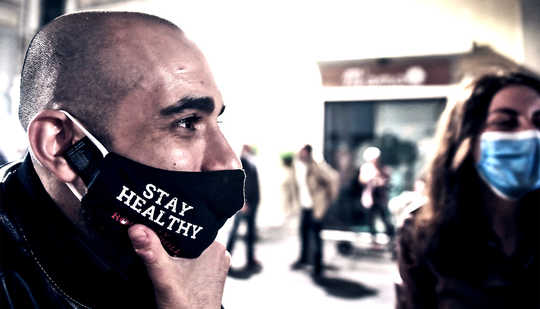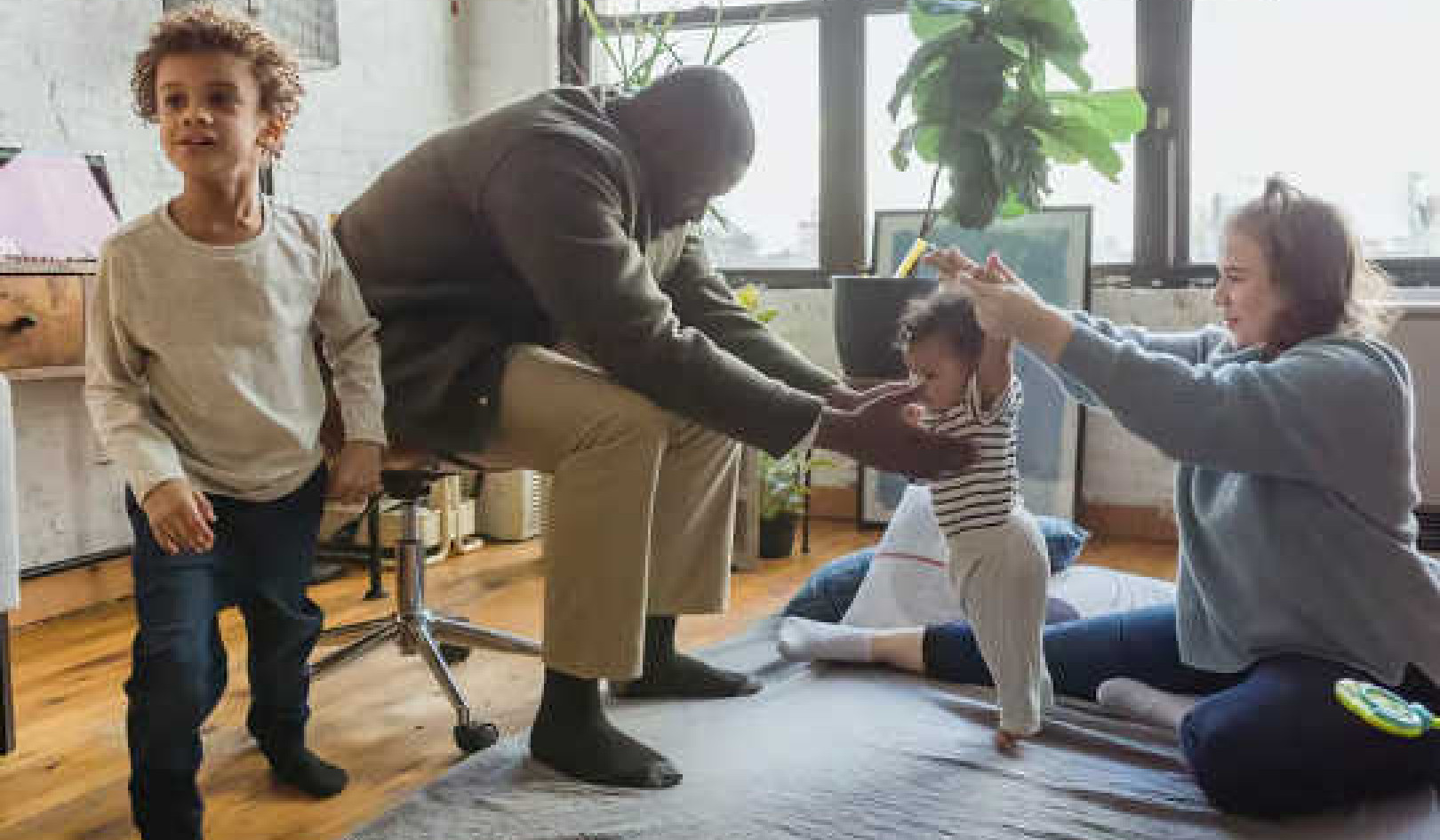
As people navigate a masked world, they’ll need to focus more on the eyes and voice to connect with those around them, a psychologist argues.
With faces covered to help reduce the spread of COVID-19, some of the facial cues that people rely on to connect with others—such as a smile that shows support—are also obscured.
This will be particularly true for North Americans, says Jeanne Tsai, a professor of psychology at Stanford University and director of the Stanford Culture and Emotion Lab, who value high energy emotions—such as excitement or enthusiasm, which are associated with big, open smiles—more than East Asians do.
Here, Tsai shares how some of those cultural differences may explain why some people resist face coverings more than others. For example, research has shown that North Americans judge people with bigger smiles to be friendlier and more trustworthy than East Asians, so face coverings may make it harder for them to connect with strangers, she says.
Moreover, Tsai’s research has shown that these cultural differences have consequences for things like resource sharing—North Americans give more to people who show bigger smiles than do East Asians. This may make North Americans less likely to share with people whose faces are covered, at a time when sharing is critical, according to Tsai.
However, understanding these differences can also help guide workarounds to overcome barriers to connection, Tsai says, pointing to the smiling photos that healthcare workers at Stanford Hospital taped over their personal protective equipment to help their patients feel more at ease as an example.
Here, Tsai digs into how our faces communicate emotions and how wearing face masks will change how we navigate the world:
Q
What emotions do our faces reveal?
A
We express many different emotions on our faces—excitement, calm, and happiness as well as anger, sadness, and fear. The face isn’t the only channel we use to express our emotions—we use our words, our voices, and our bodies, but it is obviously an important one. In fact, scholars have been interested in the face as a channel for expressing our emotions since Charles Darwin, and it was the first channel that psychologists like Paul Ekman turned to when trying to categorize and measure emotion in the 1960s and 70s.
Q
What happens when our faces are hidden behind a facial covering?
A
The face coverings that are the most relevant now cover the nose and mouth. These face coverings make it harder for people to see others’ emotions, including their smiles, which facilitate social connection. This is particularly true for North Americans, who tend to focus on people’s mouths when reading their emotions. Since researchers have shown that in many East Asian cultures, people tend to focus more on the eyes, covering the mouth may interfere less with their feelings of social connection.
Q
Can you explain some of the cultural differences that you found in your research?
A
The mouth seems particularly important in the United States partly because mouths are a critical part of conveying big smiles, and for Americans, bigger smiles are better. Our work finds that North Americans judge people with bigger smiles to be more friendly and trustworthy. In fact, smiles have an even stronger influence on judgments of friendliness and trustworthiness than more structural facial features associated with race or sex. This is because North Americans value high energy positive emotions (like excitement and enthusiasm), which tend to evoke big open smiles. East Asians, however, don’t value these high energy emotions as much, and so do not rely on smile size to the same extent as East Asians to judge others’ approachability.
These cultural differences are even reflected in brain activity—North Americans show more activity in brain regions associated with rewards like money when gazing at bigger vs. smaller smiles, in comparison with Chinese. Thus, masks cover up the part of the face that North Americans may find most pleasing, and that they rely upon to distinguish friend from foe. This may be why North Americans have complained that masks make them feel disconnected from others.
Q
What are some non-verbal communication strategies that people can use when trying to connect with other masked people?
A
At the very least, I think people will have to learn to smile with their eyes and voices, and to read the eyes and voices of others more.
But there may be other innovative workarounds. North Americans have already come up with a few. For example, some people have created surrogates for smiles, like the clever health care workers here at Stanford who pasted their smiling pictures on their lab coats, or the emergence of novel masks designed to show or even emulate the mouth. These and other simple solutions might offset the costs of covering smiles.
In the meantime, it might be safest to assume the best—that under their masks, people are still friendly, trustworthy, and deserving of help—particularly since they are trying to protect others as well as themselves from illnesses like COVID-19.
Q
Are there other lessons from your research that you think applies to these current times?
A
In our work, we’ve found that North Americans are not only more likely to judge people with big toothy smiles as more approachable and to share resources with them, they are also more likely to hire those people as employees or physicians.
Because cultures differ in how much they value high energy emotions (and therefore, big smiles), individuals from some cultures don’t want to show big smiles. North Americans often underestimate how approachable these people are, and this can lead to cultural biases in hiring. I worry that these cultural biases may take an even greater toll when interactions move to online platforms that focus on the face. So one general lesson is that how approachable someone seems might have more to do with your cultural conditioning than with their actual character.
Source: Stanford University

Related Books:
The Five Love Languages: The Secret to Love That Lasts
by Gary Chapman
This book explores the concept of "love languages," or the ways in which individuals give and receive love, and offers advice for building strong relationships based on mutual understanding and respect.
Click for more info or to order
The Seven Principles for Making Marriage Work: A Practical Guide from the Country's Foremost Relationship Expert
by John M. Gottman and Nan Silver
The authors, leading relationship experts, offer advice for building a successful marriage based on research and practice, including tips for communication, conflict resolution, and emotional connection.
Click for more info or to order
Come as You Are: The Surprising New Science that Will Transform Your Sex Life
by Emily Nagoski
This book explores the science of sexual desire and offers insights and strategies for enhancing sexual pleasure and connection in relationships.
Click for more info or to order
Attached: The New Science of Adult Attachment and How It Can Help You Find—and Keep—Love
by Amir Levine and Rachel Heller
This book explores the science of adult attachment and offers insights and strategies for building healthy and fulfilling relationships.
Click for more info or to order
The Relationship Cure: A 5 Step Guide to Strengthening Your Marriage, Family, and Friendships
by John M. Gottman
The author, a leading relationship expert, offers a 5-step guide for building stronger and more meaningful relationships with loved ones, based on principles of emotional connection and empathy.






















